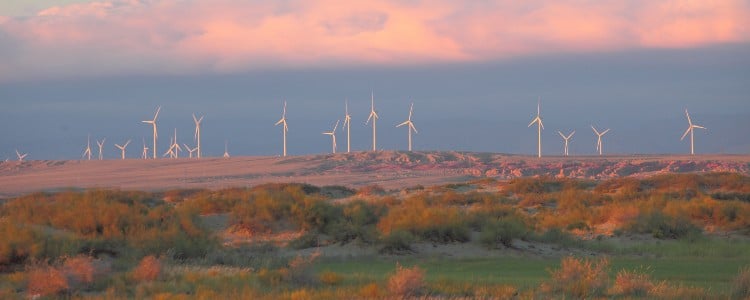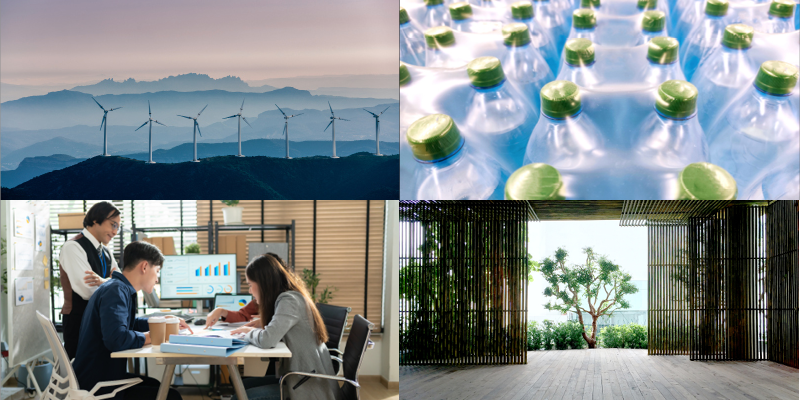
The potential for new renewable energy projects in Africa is vast. In 2024, about 600 million people, equal to 40 percent of Africa’s total population, lacked access to electricity. Most new energy projects still rely on fossil fuels. However, solar energy is now rapidly becoming the most cost-effective energy source in many African countries, offering ample opportunities for renewable energy developers.
Although the prospects are good, setting up renewable energy projects in Africa is not for the faint of heart. Developers need to possess the expertise and local knowledge to navigate Africa’s unique socio-political landscape, including local variations in regulatory predictability and energy policies. Developers should also anticipate a highly competitive investor environment and ensure they can answer probing questions, such as about the robustness of their off-take agreements.

ERM partner Stephanie Gopaul specializes in capital project delivery in Africa. She has worked on major infrastructure projects in the region for the last eighteen years, partnering with renewable energy developers, builders, operators, and investors in numerous countries, including Morocco, South Africa, Egypt, Kenya, and Tanzania. In this interview, she shares her hard-won insights into the challenges, opportunities, and local idiosyncrasies developers can expect in the exciting and fast-growing African market for renewable energy.
Where in Africa do you see the most renewable energy activity? What factors make those areas particularly attractive for renewable energy development?
We see the most renewable energy development activity in South Africa, Egypt, Morocco, and Kenya. These countries have emerged as leaders due to a combination of favorable natural resources, stable policies, and favorable investment frameworks. South Africa, for instance, accounts for about 17% of Africa’s total renewable energy capacity, driven by its Renewable Energy Independent Power Producer Procurement Programme (REIPPPP), which offers clear procurement rules and guaranteed purchase agreements that attract both local and international developers.
Egypt and Morocco have made significant strides in solar and wind energy, with Morocco hosting the Noor Ouarzazate Solar Complex, which is one of the largest concentrated solar power plants globally. Kenya leads in geothermal energy, with nearly 1 gigawatt (GW) of installed capacity, making it the world's seventh-largest geothermal producer. These countries benefit from high solar irradiation (5 to 7 kilowatt-hour (kWh)/m²/day), strong wind corridors, and supportive regulatory environments that can reduce investor risk and accelerate project timelines.
Are any areas emerging as potential new renewable energy “hot spots”?
Yes—we are seeing exciting progress in Rwanda, Tunisia, Tanzania, and Algeria. Rwanda, for example, is pioneering decentralized solar mini-grids and community-based electrification models aimed at improved rural energy access. Tunisia has committed to sourcing 30 percent of its energy from renewables by 2030, with large-scale solar and wind projects already underway.
Algeria’s Tafouk 1 Mega Solar Project is valued at USD 3.6 billion and aims to deliver 4 GW of solar energy by 2025, positioning the country as a regional leader in solar development.
Namibia is positioning itself as a renewable energy powerhouse, leveraging its abundant solar and wind resources to drive energy transformation. According to the International Renewable Energy Agency (IRENA), Namibia’s energy mix is dominated by hydropower and solar, with wind still in its nascent stages but growing. Namibia’s Energy Transition Strategy aims for net-zero emissions by 2050, supported by initiatives such as green hydrogen, energy storage, and sustainable cooking solutions. The country is also a founding member of the Accelerated Partnership for Renewables in Africa (APRA), which is aiming to mobilize USD 100 billion in green investments across the continent.
Mozambique is also in a nascent, but rapidly growing phase. It has vast untapped potential in hydropower, solar, wind, and biomass, and is actively working to triple its renewable energy capacity by 2030. Flagship projects, such as the Mphanda Nkuwa Hydropower Plant and the national RENMOZ-2025 Atlas, demonstrate strategic intent; however, much of the infrastructure is still being planned or financed. Like Namibia, Mozambique is a member of APRA and is attracting international investment, but it is not yet considered a top-tier market in terms of installed capacity or project maturity.
According to the IEA, private sector clean energy investment in Africa has more than doubled since 2019, from approximately USD 17 billion to nearly USD 40 billion in 2024. What’s driving this investor interest?
In my experience working closely with investors and developers across Africa, I’ve seen a noticeable shift in how the private sector views clean energy opportunities on the continent. Firstly, solar PV has become the most cost-effective power source in many African countries. The drop in global technology costs has made solar viable and an obvious choice, opening doors for scalable solutions, especially in regions where grid access is limited.
Secondly, policy reforms in countries like South Africa and Egypt have made a real difference. For example, clearer regulatory frameworks and more transparent procurement processes have boosted investor confidence. These help reduce risk and make long-term planning more feasible.
Another major driver is the rise of climate finance and ESG mandates. Many institutional investors are under pressure to align with sustainability goals, and Africa offers high-impact opportunities that also meet these mandates. It’s not just about returns—it’s about meaningful impact.
I’ve also noticed a growing interest in energy access startups, particularly in off-grid and commercial-industrial solar. The emergence of venture capital and private equity in this space has diversified the investment landscape, bringing in new players who are willing to take calculated risks.
All of this reflects a broader confidence in Africa’s renewable energy potential. From what I’ve seen, there’s a real sense that Africa isn’t just catching up—it’s helping shape the global energy transition.
What are private investors most likely to scrutinize in a renewable energy project? What mistakes do developers most commonly make that jeopardize their ability to get project financing?
Private investors tend to scrutinize regulatory predictability and the stability of energy policies. They also typically want to see bankable Power Purchase Agreements (PPAs) with creditworthy off-takers, and they will analyze project feasibility, including resource assessments and financial modeling, and risk mitigation instruments such as guarantees and insurance.
Developers have to compete for financing, so it’s important that they are diligent about meeting investors’ expectations. When we work with developers, we help them avoid common mistakes, like underestimating off-taker risk or failing to secure robust risk mitigation instruments. We also see many developers neglect robust community engagement, which can lead to delays or opposition. That’s why we make sure that all our clients have a meaningful community engagement plan.
Can you share examples of how ERM has helped clients navigate complex stakeholder landscapes, particularly where local communities, governments, and international lenders have competing objectives?
I’ve found that navigating stakeholder complexity is often the most critical and nuanced part of any project. We’ve supported clients in contexts where community concerns, government priorities, and lender requirements weren’t just misaligned—they were fundamentally at odds with each other. What’s helped us consistently is our commitment to early, transparent, and inclusive engagement.
One example is when our team developed the stakeholder engagement plan, where we had to balance the expectations of international lenders (who required strict adherence to IFC Performance Standards) with local community concerns around environmental impact and access to information. We ran multi-phase engagement processes, ensuring vulnerable groups were identified and consulted, and that a robust grievance mechanism was in place. That early groundwork helped build trust and avoid delays later in the project.
On another project, we supported a client navigating national and provincial/ state-level dynamics that directly influenced community sentiment and regulatory processes. Our team leaned heavily on local networks and senior advisors with deep experience in government and civil society. That allowed us to tailor our engagement strategy in a way that respected local sensitivities while still meeting international expectations.
Closer to home, in South Africa, I’ve seen how ERM’s monthly stakeholder engagements with a key client helped maintain trust and transparency during groundwater remediation and infrastructure upgrades. These weren’t just formalities; we built long-term relationships with local associations, regulators, and community representatives. That continuity helped us preempt issues and align on shared outcomes.
We also utilize structured tools, such as influence-interest matrices and stakeholder registers, to tailor our approach. For instance, in our work on a data center project in Europe, we mapped stakeholders across government, industry, and community groups, and developed engagement plans with targeted messaging and specific timelines. That helped us secure permitting and community buy-in simultaneously.
What I’ve learned is that meaningful engagement isn’t about ticking boxes—it’s about listening, adapting, and building trust. Whether it’s through participatory planning sessions, site visits, or political and media monitoring, we make sure every voice is heard and reflected in the project design.
In your experience, what are the key factors that help build trust and resilience in community relationships throughout the renewable energy project lifecycle?
From my experience, building trust and resilience with communities isn’t just a best practice—it’s a necessity. Projects succeed or stall based on how well we engage, listen, and deliver on promises.
For me, it starts with early and continuous engagement, and having consistency helps us build credibility and avoid surprises later on.
Transparent communication is another cornerstone. In many African countries, we work with local partners to support stakeholder engagement. We don’t just share project updates; instead, we strive to create space for meaningful feedback and mechanisms for this feedback to be acted upon.
Benefit-sharing mechanisms are also important. I’ve seen how local employment, infrastructure investment, and training programs can shift community sentiment from skepticism to support.
We also prioritize culturally sensitive approaches. In our work, we tailor engagement methods to reach women, youth, and vulnerable groups, using local languages and formats that respect community norms and values. That inclusivity makes a real difference in how projects are received.
And finally, we’ve learned that resilience comes from working on relationships, not just reports. We use tools such as stakeholder registers and influence-interest matrices to guide our engagement; however, it’s the human connection in actions like site visits, listening sessions, and follow-through that truly builds trust.
[For more on community relationships, read our white paper about building a resilient social license to operate when developing renewable energy projects in Africa.]
When should developers expect to partner with both private and public investors on blended financing models? How can this be done successfully?
From my experience, blended finance becomes essential when you're working in markets that are still developing, or on projects that are early-stage or commercially marginal. These are the situations where private capital alone often isn’t enough to get things off the ground.
Blended finance works best when there’s a clear structure for risk-sharing and a strong alignment of interests between public and private partners. Transparency in governance and reporting is also important, especially when international lenders are involved. I’ve worked on opportunities where we had to carefully separate core and optional services, price them strategically, and ensure the scope was lean enough to qualify for direct awards, while still meeting lender expectations.
But it’s not just about the funding, it’s also about the relationships. Successful blended finance requires developers to engage early with development finance institutions (DFIs), understand their priorities, and build trust. ERM is often invited to bid on permitting projects precisely because we can balance local compliance with international standards, which is often a key requirement for blended finance structures.
Ultimately, the goal is to make projects more bankable without compromising on impact. That means integrating ESG rigor, stakeholder engagement, and technical due diligence from the outset.
You and your team often support the full lifecycle of a project’s development, construction, and operation. How do you use this comprehensive perspective to anticipate and mitigate risks?
Being a committed partner throughout the entire lifecycle of a project enables us to be proactive and tackle risks earlier. By integrating technical due diligence, regulatory analysis, and stakeholder engagement from the outset, we can help clients avoid costly surprises and delays.
For example, during the design phase, we assess environmental and social risks, while during construction, we ensure compliance with permitting and safety standards. During the operational phase, we monitor performance and adjust strategies in response to evolving regulatory or market conditions. This holistic view ensures that risks are not only identified early but also managed continuously throughout the project lifecycle.




